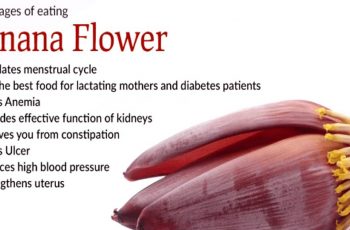Heart disease is a prevalent condition that affects millions of people in the United States. It is essential to recognize the signs of heart disease early to ensure timely intervention and treatment. By understanding the symptoms and risk factors, individuals can take proactive steps to prevent, manage, and improve their heart health.
Coronary artery disease (CAD) is the most common form of heart disease. It occurs when cholesterol deposits narrow the arteries, resulting in decreased blood flow to the heart. Common symptoms of CAD include chest pain (angina), shortness of breath, and fatigue. These signs should not be ignored, as they can indicate an increased risk of heart complications.
Several factors can contribute to the development of heart disease. Age, gender, existing health conditions, and lifestyle choices all play a role in determining the risk. Understanding these factors can help individuals make informed decisions about their health and adopt preventive measures to reduce the likelihood of developing heart disease.
Signs of Heart Disease Revealed
- Recognizing the signs of heart disease early can lead to timely intervention and better treatment outcomes.
- Common symptoms of heart disease include chest pain, shortness of breath, and fatigue.
- Several risk factors, such as age, gender, existing health conditions, and lifestyle choices, can increase the likelihood of developing heart disease.
- Taking proactive steps to prevent and manage heart disease, such as adopting a healthy lifestyle, is crucial.
- Regular check-ups and adherence to diagnostic tests are vital for early detection and intervention.
Who is at Risk for Coronary Artery Disease?
Coronary artery disease (CAD) can affect anyone, but certain factors increase the likelihood of developing this condition. It’s important to be aware of these risk factors to take proactive steps in prevention and management.
Age
Age plays a significant role in CAD risk. As we get older, the likelihood of developing coronary artery disease increases. It’s important to prioritize heart health as we age.
Gender
Gender also plays a role in CAD risk. Men generally have a higher risk until women reach menopause, after which their risk increases significantly. Understanding these differences can guide preventive measures for individuals.
Existing Health Conditions
Individuals with existing health conditions such as high blood pressure, high cholesterol levels, and diabetes are more prone to developing coronary artery disease. Managing these conditions is essential in reducing the risk of CAD.
Lifestyle Choices
Unhealthy lifestyle choices contribute significantly to heart disease risk. Physical inactivity, chronic stress, an unhealthy diet, and smoking can all increase the chances of developing coronary artery disease. Making positive lifestyle changes can significantly reduce this risk.
Family History
A family history of heart disease, especially if a close relative was diagnosed at an early age, can increase the likelihood of developing CAD. It’s important to communicate this history with healthcare providers to determine appropriate preventive measures.
By understanding and addressing these coronary artery disease risk factors, individuals can take proactive steps towards prevention and reduce the likelihood of developing this condition.
Common Symptoms of Heart Disease
Heart disease can manifest in various ways, with symptoms that can differ from person to person. Recognizing the common symptoms of heart disease is crucial for early detection and prompt medical intervention. Here are some of the most prevalent signs to watch out for:
- Chest Pain or Tightness (Angina): A feeling of pressure or aching in the chest, which can spread to the arms, neck, jaw, or back.
- Shortness of Breath: Experiencing difficulty breathing, especially during physical activities but also at rest.
- Fatigue: Feeling unusually tired and lacking energy, even after minimal exertion.
- Dizziness: Sensations of lightheadedness or a spinning feeling.
- Palpitations: Irregular or racing heartbeats that may be felt in the chest as fluttering or pounding sensations.
It is important to note that these symptoms may not always indicate heart disease but could be signs of other health conditions. However, if you experience any of these symptoms and they persist or worsen, it is essential to seek medical attention for a thorough evaluation and appropriate diagnosis.

Diagnosing Heart Disease
Diagnosing heart disease is a multi-step process that begins with a comprehensive conversation with a healthcare provider.
The healthcare provider will start by reviewing the patient’s medical history to gather information about any existing health conditions, symptoms, or risk factors that may contribute to heart disease. This initial assessment is crucial in determining the next steps in the diagnosis process.
Physical Examination and Routine Blood Work
As part of the diagnostic process, a physical examination will be performed to assess the patient’s overall health and identify any potential signs or symptoms of heart disease. This examination may involve measuring blood pressure, listening to the heart and lungs, checking for swelling or fluid retention, and evaluating other vital signs.
In addition to the physical examination, routine blood work will be ordered to assess various factors that may indicate the presence of heart disease. These blood tests may include cholesterol levels, blood sugar levels, and markers of inflammation in the body, among others.
Additional Diagnostic Tests
Based on the initial assessment and the results of the physical examination and blood work, further diagnostic tests may be recommended to confirm a diagnosis of heart disease. These tests aim to provide a more comprehensive evaluation of the heart’s structure, function, and blood flow.
- Electrocardiogram (ECG): This non-invasive test records the electrical activity of the heart and helps evaluate heart rhythm abnormalities that may indicate heart disease.
- Echocardiogram: This ultrasound-based test provides detailed images of the heart’s structure and function, allowing healthcare providers to assess the chamber sizes, pumping ability, and blood flow within the heart.
- Stress Test: This test is performed to evaluate the heart’s response to physical activity or stress. It can help identify abnormal changes in heart rate, blood pressure, or rhythm that may indicate underlying heart disease.
- Cardiac Catheterization and Angiogram: These invasive procedures involve the insertion of a thin tube into a blood vessel to visualize the coronary arteries and assess blood flow. They can help identify blockages or narrowings in the arteries, which may cause or contribute to heart disease.
- Cardiac CT Scan: This non-invasive imaging test uses advanced technology to obtain detailed images of the heart and coronary arteries, providing information about their structure and potential blockages.
By combining the information gathered from the conversation, physical examination, blood work, and additional diagnostic tests, healthcare providers can accurately diagnose heart disease and develop an appropriate treatment plan tailored to the individual patient’s needs.
Treatment Options for Heart Disease
Treatment for heart disease focuses on improving heart health and preventing further complications. By implementing lifestyle changes and, if necessary, utilizing medication or medical procedures, individuals can manage their condition effectively.

Lifestyle Changes
Making healthier choices in daily life can have a significant impact on reducing the progression of heart disease. Adopting a well-balanced diet that is low in saturated and trans fats, cholesterol, and sodium can help maintain healthy blood pressure and cholesterol levels. Regular exercise, such as brisk walking or swimming, improves cardiovascular health and strengthens the heart. Losing excess weight also decreases the strain on the heart.
Managing stress is crucial, as chronic stress can increase the risk of heart disease. Techniques like deep breathing exercises, meditation, or participating in hobbies and activities that promote relaxation can help manage stress effectively. Quitting smoking is essential, as smoking damages the blood vessels and increases the risk of heart disease.
Medication
In some cases, healthcare providers may prescribe medication to manage heart disease. Aspirin can help prevent blood clotting and reduce the risk of heart attacks. Cholesterol-lowering medications, such as statins, help control cholesterol levels. Beta-blockers can lower blood pressure and reduce the workload on the heart.
Medical Procedures
If heart disease is severe or lifestyle changes and medication do not provide sufficient improvement, medical procedures may be necessary. Angioplasty is a procedure that uses a balloon-like device to open blocked or narrowed arteries, allowing better blood flow. In more complex cases, coronary artery bypass surgery may be performed to create new routes for blood flow to the heart.
It is important to work closely with healthcare providers to develop an individualized treatment plan based on the severity of the condition and personal health needs. Regular check-ups and ongoing communication with healthcare providers are essential for monitoring progress and adjusting treatment strategies as necessary. By actively engaging in treatment and taking proactive steps to improve heart health, individuals can effectively manage heart disease and prevent further complications.
Warning Signs of Heart Disease and When to Seek Help
Recognizing the warning signs of heart disease is crucial for early intervention and prevention. Some common warning signs to watch out for include:
- Unusual tiredness or fatigue
- Trouble sleeping
- Shortness of breath
- Dizziness or lightheadedness
- Occasional passing chest pain or tightness
- Swelling in the legs or ankles
- Palpitations
If you experience any of these warning signs, it is important not to ignore them. They may indicate a larger heart-related issue and should be brought to the attention of a healthcare provider. Making an appointment to discuss your symptoms and undergo further evaluation is advised.
If you are experiencing severe symptoms such as chest pain, shortness of breath, or any signs of a heart attack, it is crucial to seek immediate medical attention. Call 911 or go to the nearest emergency room for immediate care.
Do not delay seeking help when it comes to matters of the heart. Early detection and intervention can make a significant difference in managing and treating heart disease.
Conclusion
Recognizing the signs of heart disease early is crucial for timely intervention and treatment. Symptoms such as chest pain, shortness of breath, fatigue, dizziness, and palpitations should not be ignored, as they may indicate heart disease or an increased risk of developing it.
By knowing the risk factors, understanding the common symptoms, seeking timely medical attention, and making necessary lifestyle changes, individuals can take steps to prevent, manage, and improve their heart health. Regular check-ups with healthcare providers and adherence to recommended screenings and diagnostic tests can play a vital role in early detection and intervention for heart disease.
Remember, your heart health is in your hands. Be proactive in recognizing the early signs of heart disease, as it can lead to better outcomes and a healthier future.
FAQ
What are the signs of heart disease?
The signs of heart disease can include chest pain (angina), shortness of breath, fatigue, dizziness, and palpitations.
What are the risk factors for coronary artery disease?
Risk factors for developing coronary artery disease include age, gender, existing health conditions like high blood pressure and diabetes, lifestyle choices such as physical inactivity and smoking, and a family history of heart disease.
What are the common symptoms of heart disease?
Common symptoms of heart disease include chest pain or tightness, shortness of breath, fatigue, dizziness, and palpitations.
How is heart disease diagnosed?
Heart disease is diagnosed through a combination of a patient history review, physical examination, and various tests such as an electrocardiogram (ECG), echocardiogram, stress test, cardiac catheterization, and cardiac CT scan.
What are the treatment options for heart disease?
Treatment options for heart disease often involve lifestyle changes such as adopting a healthier diet, regular exercise, weight management, stress management, and quitting smoking. In some cases, medication or medical procedures may be necessary.
What are the warning signs of heart disease and when should I seek help?
Warning signs of heart disease include unusual tiredness or fatigue, trouble sleeping, shortness of breath, dizziness, passing chest pain or tightness, swelling in the legs or ankles, and palpitations. If you experience these symptoms, it is important to make an appointment with a healthcare provider. If you experience severe symptoms such as chest pain or shortness of breath, it is crucial to call 911 or seek emergency medical attention immediately.










